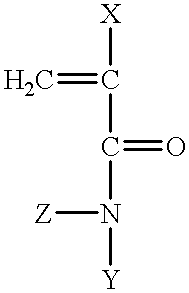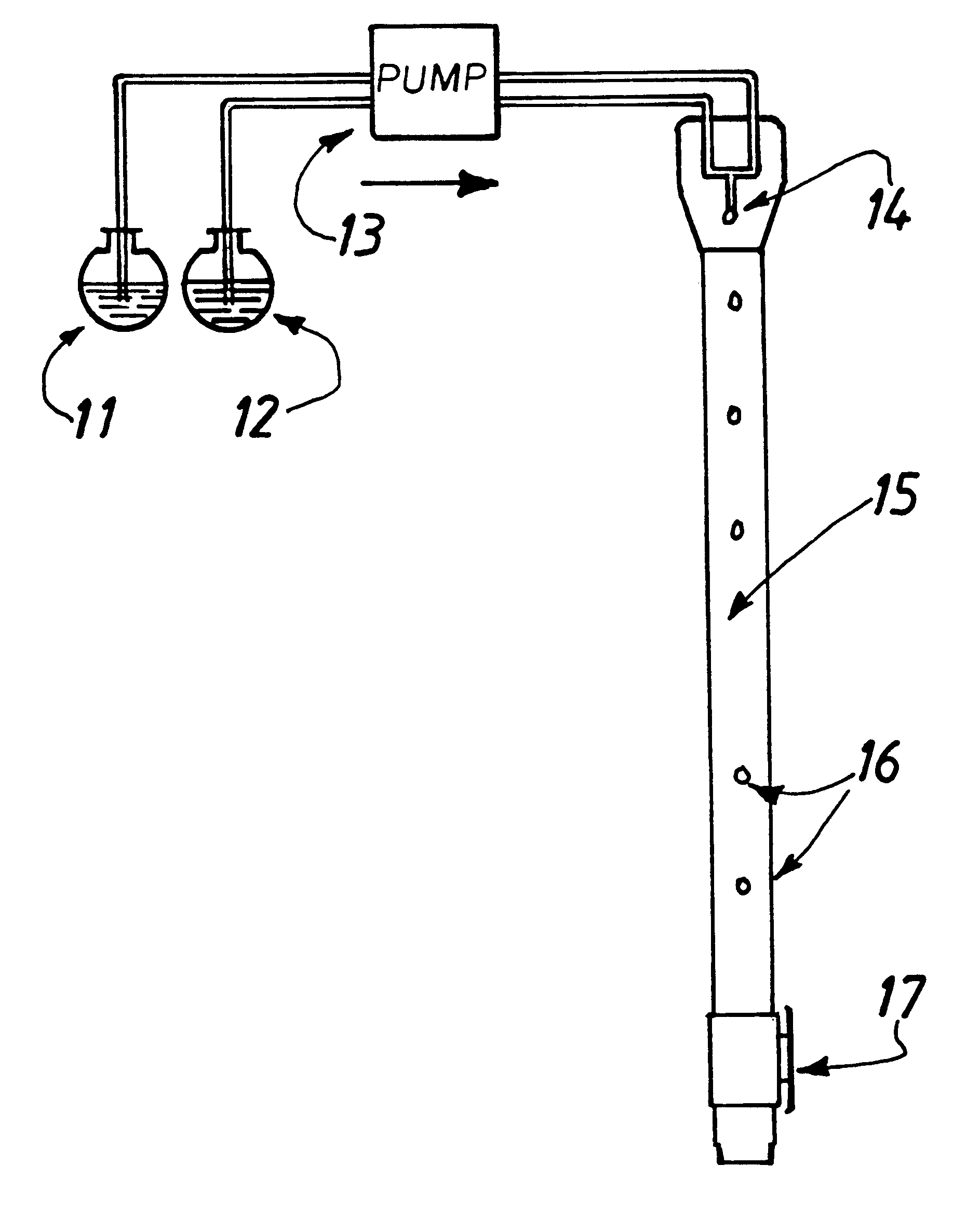Method for the decontamination of a photographic bath using heat-reversible polymer particles
a technology of heat-reversible polymer particles and photographic baths, which is applied in the direction of multi-color photographic processing, photosensitive materials, instruments, etc., can solve the problems of reducing the efficiency of the bath, affecting the sensitometric accuracy of the photographic product, and polluting the bath
- Summary
- Abstract
- Description
- Claims
- Application Information
AI Technical Summary
Benefits of technology
Problems solved by technology
Method used
Image
Examples
Embodiment Construction
porous polyisopropylacrylamide gel was prepared by the following procedure, using the device depicted in FIG. 1. The cross-linking agent was N,N'-methylenebisacrylamide, the polymerization initiator was ammonium persulfate, the accelerator was tetramethylethylenediamine. In the flask 11, 20 ml of de-gassed water purified by reverses osmosis, 3.2 g of N-isopropylacrylamide purified by crystallization in hexane, 0.06 g of N,N'-methylenebisacrylamide, and 0.054 g of tetramethylethylenediamine. Separately, a solution of 1.2 g of ammonium persulfate in 20 ml of osmosed and de-gassed water was prepared in flask 12. The flow rate of the pump was 1 ml / minute. The length of column 15 was 120 cm, and its internal diameter was 25 mm. Tube 15 was made of braided polyester coated with transparent PVC. The polymer was formed at the base of column 15, as opaque hydrogel beads. This polymer had an LCST below 35.degree. C. Lastly, the beads were washed with pentane on a pumped filter funnel to remov...
PUM
| Property | Measurement | Unit |
|---|---|---|
| diameter | aaaaa | aaaaa |
| temperature | aaaaa | aaaaa |
| temperature | aaaaa | aaaaa |
Abstract
Description
Claims
Application Information
 Login to View More
Login to View More - R&D
- Intellectual Property
- Life Sciences
- Materials
- Tech Scout
- Unparalleled Data Quality
- Higher Quality Content
- 60% Fewer Hallucinations
Browse by: Latest US Patents, China's latest patents, Technical Efficacy Thesaurus, Application Domain, Technology Topic, Popular Technical Reports.
© 2025 PatSnap. All rights reserved.Legal|Privacy policy|Modern Slavery Act Transparency Statement|Sitemap|About US| Contact US: help@patsnap.com



